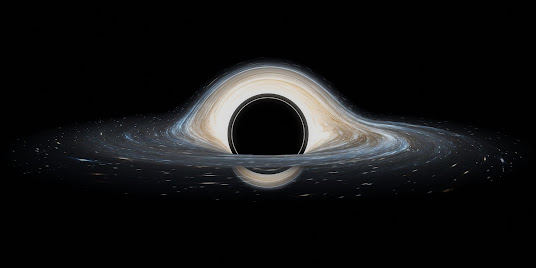The Hubble Space Telescope
Since its launch in 1990, the Hubble Space Telescope has revolutionized our understanding of the universe. Positioned above Earth's atmosphere, Hubble has provided astronomers with unobstructed views of celestial phenomena, capturing stunning images and collecting data that has reshaped our comprehension of space.
The Hubble Space Telescope
The Hubble Space Telescope (HST) is a joint project of NASA and the European Space Agency (ESA). Named after the American astronomer Edwin Hubble, whose work demonstrated the expansion of the universe, the telescope was designed to observe the universe in visible, ultraviolet, and near-infrared wavelengths. The primary goal was to extend our knowledge of the universe, from planetary science to the farthest reaches of the cosmos.
Key Achievements
Over its more than three decades of operation, Hubble has made numerous groundbreaking discoveries:
1. Accelerating Universe: Observations of distant supernovae provided evidence for the accelerating expansion of the universe, leading to the postulation of dark energy.
2. Galactic Evolution: Hubble’s deep field images have revealed galaxies at various stages of evolution, offering a glimpse into the history of galaxy formation and growth.
3. Star and Planet Formation: The telescope has captured detailed images of star-forming regions, like the iconic "Pillars of Creation" in the Eagle Nebula, and has identified protoplanetary disks around young stars, giving insights into how solar systems form.
4. Exoplanet Atmospheres: Hubble has played a crucial role in characterizing the atmospheres of exoplanets, detecting water vapor, and analyzing atmospheric compositions.
The Hubble Space Telescope
Latest Updates and Discoveries
As of 2024, Hubble continues to operate and contribute to astronomical research. Here are some of the latest updates and discoveries from the Hubble Space Telescope:
1. Probing Exoplanet Atmospheres:
Hubble has been instrumental in studying the atmospheres of exoplanets, particularly those in the habitable zone of their parent stars. Recent observations have focused on identifying water vapor, methane, and other molecules that could indicate potential habitability.
2. Understanding Dark Matter:
Hubble's detailed images of galaxy clusters, such as Abell 370, have provided critical data for mapping dark matter. By analyzing the gravitational lensing effects, astronomers can infer the distribution of dark matter, which is otherwise invisible.
3. Star Formation in Distant Galaxies:
Recent studies using Hubble have shown that star formation rates in some distant galaxies are much higher than previously thought. These findings help explain the rapid buildup of stellar mass in the early universe.
4. Colliding Galaxies:
Hubble has captured images of several galactic collisions, offering a closer look at the dynamics involved when galaxies merge. These collisions often trigger bursts of star formation and significantly alter the structure of the galaxies involved.
5. Black Hole Jets:
Hubble has provided unprecedented views of jets of high-energy particles emanating from supermassive black holes. These observations help astronomers understand how black holes influence their surroundings and regulate the growth of galaxies.
6. Ultraviolet Observations:
The Cosmic Origins Spectrograph (COS) on Hubble has been used to observe the ultraviolet light from various celestial objects. These observations are crucial for studying the formation of stars and galaxies, as well as the interstellar medium.
Technological Challenges and Solutions
Hubble has faced its share of challenges over the years. Shortly after its launch, a flaw in the primary mirror caused blurry images. However, a servicing mission in 1993 installed corrective optics, effectively giving Hubble "glasses" to correct its vision. Since then, several servicing missions have upgraded Hubble’s instruments, extended its lifespan, and enhanced its capabilities.
The most recent servicing mission was in 2009, and since then, Hubble has continued to operate beyond its expected lifetime. The telescope has experienced various technical issues, but innovative solutions and remote repairs have kept it functioning. The collaboration between engineers and scientists ensures that Hubble remains a valuable tool for astronomical research.
The Legacy and Future of Hubble
Hubble's legacy is unparalleled. It has transformed our understanding of the universe and inspired countless people around the world. The data it has collected will continue to be analyzed for years to come, likely leading to new discoveries long after the telescope is decommissioned.
Preparing for the James Webb Space Telescope
The James Webb Space Telescope (JWST), launched in December 2021, is Hubble’s successor. JWST is designed to observe in the infrared spectrum, which complements Hubble’s capabilities. Together, these telescopes provide a more comprehensive view of the universe. Hubble's observations have laid the groundwork for many of JWST's targets, and the two telescopes are expected to work in tandem to explore the cosmos.
Educational and Public Engagement
Hubble's stunning images and the stories behind its discoveries have captivated the public’s imagination. NASA and ESA have made a concerted effort to share Hubble’s findings with the world, making its data and images freely available. Educational programs, public lectures, and media coverage have all contributed to increasing public interest in astronomy and science.
The Hubble Space Telescope stands as a testament to human ingenuity and our insatiable curiosity about the universe. Its discoveries have reshaped our understanding of the cosmos, revealing the complexity and beauty of the universe. As Hubble continues to operate and provide valuable data, it remains a symbol of the power of science and exploration. The future of space observation, with the combined efforts of Hubble and the James Webb Space Telescope, promises to unveil even more secrets of the universe, continuing the legacy of one of the most important scientific instruments ever created.






Comments
Post a Comment